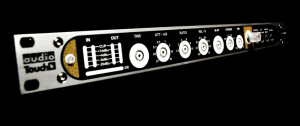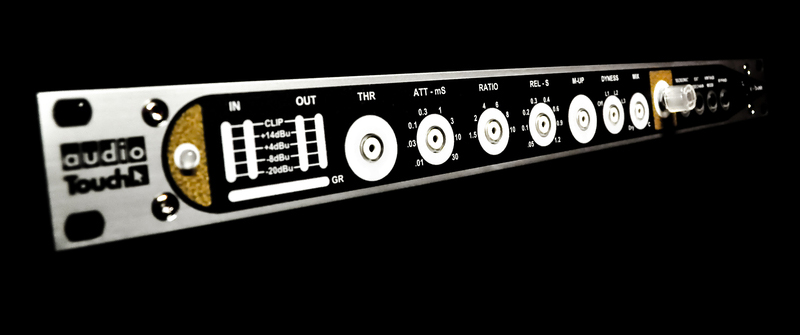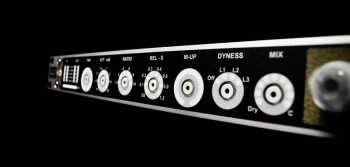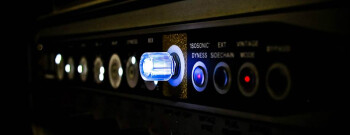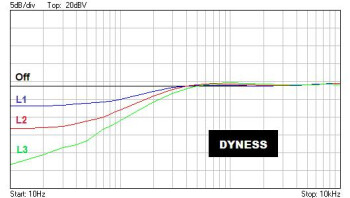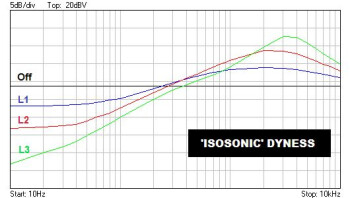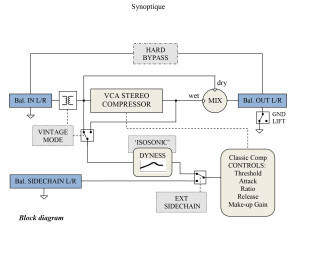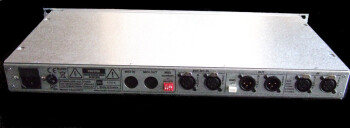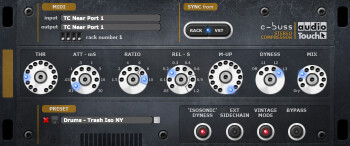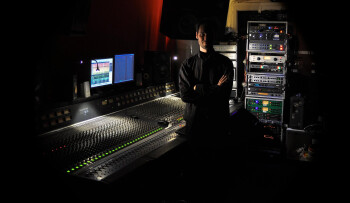In terms of hardware compressors, the latest products are too often expressions of the same theme, variations on a mythical device that has already proved its worth. Fortunately though, on rare occasions, a nice surprise arrives at your door. This is especially true in regard to today's topic since, for once, the innovation was right next door...
Once upon a time…
Just like for many stories, “it’s about a guy, ” an AFer like you and me, whom I met a few years ago during an AF cocktail in our beautiful city of Montpellier, France. Like your humble servant, Paul is passionate about sound at a level bordering on geekiness. So we quickly hit it off, discussing gear around a few pints until an ungodly hour. We met repeatedly thereafter, notably in his superb, drool-worthy studio. Life, hectic as it is, took me to Brussels to play with sound, but we never lost touch.
On my return to the south of France, it was only natural that we ran into each other at a concert involving mutual friends. It was then that Paul first told me about a crazy project he’d been working on for some time in conjunction with a sound/electronic engineer, designing an high-end analog compressor that would be controllable with plug-ins. Imagine for a moment: the sound quality of the hardware world combined with the flexibility of the virtual world! A year later, he gave me a demonstration of a fully functional prototype that blew me away. Meanwhile, I had integrated the team of freelancers from our “dating site.” This brings us to today’s test, the logical way to come back to square one.
Well, enough melodrama, let’s tackle it head-on… And fasten your seatbelts, this might shake!
Atypical attitude
As you’ve probably realized, AudioTouch is a new manufacturer based in the Montpellier south region, now introducing its first product, namely the C-Buss. Entirely designed and manufactured in France, it is an analog stereo VCA compressor digitally controlled and controllable via MIDI (thanks to a plug-in), and therefore directly from your DAW. This sturdy 19-inch 1U rack is supplied in a custom-built, rigid plastic case that also contains the power cable and a USB key featuring the plug-in installer (VST/RTAS/AAX/AU formats for Mac and PC in 32– and 64– bit) and documentation in PDF format in French.
The unique nature of the C-Buss is apparent right out of the box. Indeed, the front only has a single potentiometer, used to control all settings. Each parameter has a central selection button with a red LED and a ring of white LEDs to indicate the current setting. The potentiometer only controls the setting when the central LED is illuminated. Although this operating system may seem confusing at first, it quickly proves its effectiveness! Especially since the LEDs allow you to size up the settings at a glance, even if you’re far away from this little powerhouse or in low-light conditions.
Other than that, we find the classic elements of compression (threshold, attack and release, ratio and makeup gain), but with some subtleties…First in terms of attack times. The C-Buss proposes fixed times of 30, 10, 3, 1, 0.3, 0.1, 0.03 and even 0.01 ms! Suffice it to say that there is lots of potential there. In the hardware world, 0.01 ms is fast, very fast – more than enough to do some damage if you’re not careful, but when properly used, it becomes a formidable tool. In regards to the release, the available times are 1.2, 0.9, 0.6, 0.4, 0.3, 0.2, 0.1 and 0.05 second, not counting the automatic mode. Again, there is a lot here to get your groove going and to help your compression breathe. The ratio options, meanwhile, are 1.5, 2, 4, 6, 8 and 10 to 1, as well as a limiter mode.
Even just with these options, there is a lot to have fun with. But AudioTouch doesn’t stop there, letting you set the mix of the dry and compressed signal, as well as a parameter called Dyness which is “simply” an internal sidechain to exclude low frequencies from the detection circuit, with no less than 3 different filter slopes. As a whole, it is effective and worthy of the most comprehensive hardware compressors on the market. And the best part is that it goes further by providing the unique feature of an Isosonic button that toggles the Dyness curve in order to “force” the detection circuit to be more sensitive to high mids. This mode is especially useful for vocal or guitar signals, giving you control of the high mids while maintaining the low mids and bass.
The icing on the cake is the Vintage switch that changes the internal topology of the compressor, toggling feedback mode and adding transformers to add color to the sound. In the synopsis, you might incidentally notice that the bypass (accessible via the dedicated button) is a true physical bypass that connects inputs to outputs directly, even when turned off. Sweet!
To complete the picture, a last switch activates the external sidechain circuit. The C-Buss certainly doesn’t slack off in terms of visual indicators, with LED VU-meters for input and output levels (5 LEDs each per channel) and gain reduction (10 LEDs, –2 dB per LED). Finally, the C-Buss has an internal memory to store and recall up to 21 user presets in a flash.
The inclusion of so many thoughtful features in a single rack unit really commands respect!
Let’s look now at the back. Here we find stereo inputs and outputs as well as the balanced inputs for the external sidechain (stereo, bravo!), all on XLR sockets. This is also where the MIDI input and output is, via 5-pin DIN sockets, to enable communication with the plug-in. Before we talk about this last aspect, know that the little red switch next to the MIDI connection is used to assign a MIDI number to the device… For it is possible to MIDI chain up to 16 C-Buss units and control each of them via separate instances of the plug-in.
Developed in partnership with OROSYS, another French company best known under the Two Notes Engineering brand (with its famous Torpedo) the plug-in used to drive the C-Buss provides flexibility unparalleled in the analog world. Using more or less the design of the front panel of the hardware, it provides access to all parameters. The settings are infinitely savable as presets that can be exported to share with other users. On that subject, this beast comes with an impressive 20 factory presets. And of course, your settings will be saved with your DAW sessions. In terms of integration of an analog device into the digital world, it’s an absolute dream! No more rooting through loose papers to look for notes on settings in order to find them again when subsequently opening a project – here we are treated to an instant recall!
Once you select the MIDI ports and the number of the unit to be controlled, you simply activate the synchronization from the plug-in and the settings are transferred to the C-Buss. A blue LED to the right of the machine indicates that the sync is active. Speaking of which, upon starting the plug-in it is possible to choose to send its settings to the hardware unit, or, on the contrary, to get the hardware’s current settings back to the plug-in. Aside from that, once the synchronization is active, communication between the two is bidirectional. That is to say that any changes to the plug-in will be immediately transferred to the C-Buss and conversely a change in the unit will be reflected in the plug-in. Think about it: it’s possible to use your DAW’s automation to drive your hardware compressor. It’s child’s play, and could not be more effective to use! And if you have a MIDI controller with enough knobs and switches, control truly becomes a treat.
Some minor drawbacks though…it would have been nice to have visual feedback directly in the plug-in for input and output levels as well as gain reduction. Additionally, an A/B comparison function would have added flexibility of use. Finally, a MIDI Learn function to easily assign parameters to a MIDI controller would have been welcome. That said, the stability of the plug-in/hardware on the whole is exemplary and some of the above-mentioned remarks may be a matter of a simple software update.
In terms of sound, the C-Buss is clearly the cream of the crop, easily recalling such legendary compressors as the API 2500, the SSL G4000 or the Neve 33609. This machine can stand up to its predecessors and even boasts a signature sound, as you’ll see in the following excerpts.
Bus driver
As its name suggests, the C-Buss is primarily intended to preside via bus insert. It is therefore only natural that we start this session by listening to a drum bus.

- 01 Drums dry 00:42
- 02 Drums modern 00:42
- 03 Drums vintage 00:42
- 04 Drums vintage hard 00:42
- 05 Drums trash 00:42
- 06 Drums trash NY 00:42
- 07 Drums automation 00:42
In the “Drums -modern” example, the gain reduction ranges between 0 and –8 dB. An attack time of 3 ms and a moderate ratio of 4:1 permits the preservation of the dynamic aspect of peaks while controlling the rest. The first Dyness level spares the kick drum and gives the snare more punch, evoking a good sense of depth. The hi-hats integrate better with the other elements and toward the end, the toms gain extra soul with greater resonance. The C-Buss creates a pretty cohesive whole while still remaining transparent.
If we toggle the Vintage mode without touching the previous settings (“Drums-vintage”), the compressor works even more smoothly with 0 to –6 dB of gain reduction. Adding audio transformers sweetens the high end with vivid harmonics.
The sample “Drums -vintage -hard” illustrates a shorter attack time (0.1 ms) and a higher ratio (8:1) for a gain reduction of 0 to –10 dB. Adapting the release time can heap ambiance on the groove. The color of the transformers is even more present in this case.
“Drums –trash, ” as its name suggests, doesn’t deal in subtleties. The ultra-fast attack of 0.01 ms and ratio of 10:1 leaves peaks no chance. These settings aren’t really usable in that state (then again if used as an occasional effect, why not?), but when we mete out the treatment sparingly – thanks to the dry/wet mix setting (“Drums-trash-NY") – it takes on a whole other appeal.
Finally, the “Drums-automation” example shows what can be achieved simply by automating the dry/wet mix parameter.
Now let’s try our little friend on the master bus of a full song.

- 08 Master dry 00:33
- 09 Master modern 00:33
- 10 Master vintage 00:33
- 11 Master vintage hard 00:33
- 12 Master vintage hard 2 00:33
With a very short attack time (0.01 ms), a low ratio (1.5:1) and a relatively high threshold (“Master-modern”), the C-Buss acts moderately (-2 to –6 dB) without actually altering the dynamics. The gain on the peaks can enhance the feel, increasing the “3D” effect in the background.
In the “Master–vintage” example, the compressor works much harder with a gain reduction of –4 to –10 dB. The Vintage mode produces some lovely coloration, with less aggressive treble and a thicker bottom. The ”glue" effect works perfectly here.
If we hit a little harder (“Master-vintage-hard”) in order to get a reduction between –4 and –14 dB, the transformers have a field day. The bass synth line is as dirty as you could hope for, yet the dynamics remain, although we do lose some depth.
The final excerpt (“Master-vintage-hard-2”) is clearly extravagant. At –10 to –20 dB, it’s really pumping, but what a beautiful coloration!
Let’s continue listening, now with the C-Buss used on top of a vocal bus.

- 13 VoixBuss dry 00:54
- 14 VoixBuss vintage 00:54
- 15 VoixBuss iso 00:54
With just a touch of compression (0 to –1 dB on the backing vocals, –4 dB on the lead), the “VoixBuss-vintage” sample illustrates strong cohesion in the sound once again. The lows seem fuller and the lead vocals come to the front.
If we engage the Isosonic Dyness mode, the C-Buss works harder (0 to –6 dB), and yet we still obtain a smoother sound since the high mids of the lead vocals becomes less aggressive.
While we’re at it, let’s look at what the machine can do for a single voice…

- 16 VoixSolo dry 00:20
- 17 VoixSolo vintage 00:20
- 18 VoixSolo vintage iso 00:20
It’s very easy to gain control of dynamics (-2 to –10 dB) while bringing a bit of color, as we can see from the “VoixSolo-vintage” sample. But we can go even further with the Isosonic Dyness (“VoixSolo-vintage- iso”). The gain reduction is more drastic (-8 to –18 dB) and yet smoothness is still increased.
Now for an acoustic guitar take.

- 19 Gtr dry 00:44
- 20 Gtr 1 00:44
- 21 Gtr 2 00:44
- 22 Gtr trash 00:44
- 23 Gtr trash less 00:44
In the first processed example, we gain body without attacking the peaks too much. This is due to a very slow attack (30 ms) time, a relatively high ratio (8:1), a quick release (0.2 s), and especially to the Isosonic Dyness mode that preserves the low end and keeps the high mids on a leash. As proof, the following excerpt (“Gtr-2”) is more aggressive and less balanced when the only difference in the settings is the lack of Isosonic Dyness.
When we hit harder by adding the Vintage mode, we get a very nice color, but this setting is difficult to use as is (“Gtr-trash"). Fortunately, we can have the best of both worlds, balance and coloration, via the dry/wet mix function (“Gtr-trash-less").
The C-Buss is also comfortable in the presence of an electric bass.

- 24 Bass dry 00:12
- 25 Bass attack 00:12
- 26 Bass autorelease 00:12
“Bass-attack” seriously increases aggressiveness. The Dyness allows low frequencies to remain unscathed. Treat the bass with it and it’ll definitely come through in the mix.
“Bass-autorelease” is much more controlled. The automatic release works perfectly and the result will integrate better as the backbone of a mix.
Finally, let’s see what we can get from a stereo piano take.

- 27 Piano dry 01:23
- 28 Piano bass 01:23
- 29 Piano bass vintage 01:23
- 30 Piano bass vintage iso 01:23
The first example (“Piano-bass”), with 0 to –8 dB of gain reduction, gives us good control of the dynamics. The Dyness allows us to add power to the low end. On a side note, check out the way the stereo seems to spread!
On “Piano-bass–vintage, ” the C-Buss toils less, preserving more of the original intention. The Vintage mode delivers beautiful color once again. And as before, the Dyness affords dimension to the low end.
The last sample (“Piano-bass-vintage-iso”) uses the Isosonic Dyness function. The gain reduction here is livelier and the sound appears to spread as a result of its work in the high mids that leave space for the highs and lows.
Conclusion
At the approximate price of $4,100, the C-Buss is intended primarily for audio professionals. And it has everything to seduce the big studios as well as smaller project outfits! Versatile as can be, it is equally at ease controlling dynamics seamlessly as it is adding punch and life to even the blandest tracks, thanks to innovative and superbly implemented features. If we add to this picture the ease of digital integration via the plug-in and the time savings that result, this becomes a real no-brainer, as this machine is one of a kind. In short, the C-Buss rightly deserves an award for its innovation.
At this point, you might think I’m a bit over the top too because I know one of the designers…Because of this, in fact, I questioned my own objectivity at length. In the end, I came to the conclusion that if this machine were mediocre, it would not have served anyone were I to speak well of it, as reputations are made quickly in our small community. Therefore, I sincerely believe that I would have refused to write this article if the C-Buss were not up to par. But this is not the case. It is therefore with pleasure that I spent a month torturing this wonderful toy in order to churn out these lines. I dare to hope anyone would have done the same in this situation.
As usual, I invite you to download the audio examples (in FLAC format) to better give you an idea of this machine’s potential. On the other hand, know that AudioTouch has organized a pro studio tour in order to present the C-Buss to the public. If you’re lucky enough to live near one of the tour stops, do not hesitate one second to make the trip. You must tell me all about it!
Interview
Paul Viguier, one of two men at the head of AudioTouch, was kind enough to take the time to answer some questions for the benefit of Audiofanzine members. Here is the transcript:
Nantho: Hi Paul! Could you introduce yourself briefly?
Paul: I started as a writer/composer and I wanted a studio that had equipment with some “attitude” to record my songs in Montpellier. Not having found any, I decided to make my own. I am not a pro in the audio world; I work in mainframe information technology systems by day.
N: If I understand correctly, you work with a partner, Patrice. How did you meet and, especially, how did you end up creating AudioTouch together?
P: My partner’s name is Patrice Valorge. He is a former professional sound engineer who did the first semester of the French SAE. We are both fans of Bruce Springsteen and we met on a forum dedicated to this artist. He came to my place to get some pirate CDs and saw a beautiful Amek console sitting in my lovely home studio…
N: Tell us about the genesis of the C-Buss.
P: I ordered two PCB cards in order to solder a copy of a stereo compressor that I was going to place on the output of my Soundcraft 3200, which didn’t have any. Patrice fell upon the PCB by chance at the studio and asked me to make something original out of it, something a bit “custom.” He came back 10 days later with a compressor incorporating the same recall that is found today on the SSL X-Rack! I said, "Let’s sit down a while, I have a whole list of ideas and sounds in my head that I’d like to find in one machine…” 4 years later, the C-Buss was launched.
N: Can you tell us more about this curiosity that is the Isosonic Dyness mode?
P: The Isosonic Dyness was Patrice’s idea: why not have frequencies that are more “submissive” to compression? So we looked for which frequencies these could be, and how to implement them in a 1U device. With this addition to the Dyness mode, it is easier to control instruments whose midrange is paramount. I’m thinking of guitars (acoustic or electric), vocals, etc.
Last summer’s beta tests, especially in live settings, were surprising: I lent a machine to a great live soundman in the region. I expected to see the C-Buss on the master of his console or the drum bus. But after a dozen dates, I went to see him at a show he was doing sound for, and he had put the C-Buss in Vintage mode with the Dyness and Isosonic on a vocal bus, highlighting the singers’ “throat harmonics.”
N: You presented the C-Buss for the first time in public at the last session of Audio Days. How did the meeting go and what were the results?
P: It is strange to stand in a room without ever having made contact: no one, even the importers and enthusiasts, knew about us. We set up our booth with 3 machines and 2 laptops (with Cubase and Pro Tools) with one plug-in each, and headphones available on each test station. On the eve of the show, several of the manufacturers present had fun with the C-Buss, reassuring us about the following days.
The audience was very surprised to find itself face to face with an unknown machine, with a new interface on the front and a plug-in that controls and is controlled by the rack — but we got almost nothing but good feedback. The only criticism came from the fact that a second version, integrating converters and MIDI in a single USB cable, was “necessary.” We’re considering it for the future…
N: 2014 is kicking off at top speed for AudioTouch, with a professional studio tour to introduce the C-Buss to the public. What will happen in these sessions?
P: The studio hosting the session will have previously linked the C-Buss to their patch bay and the MIDI connection will be made through the location’s workstation. From there, we’re going to have fun running different groups of tracks through the compressor, on songs proposed by the studio and/or by sound engineers who will pass by to try the device. Factory presets will be loaded, tweaked, recorded. Testers will use the plug-in as well as the front controls. They can ask questions and submit their ideas for future models. In short, enthusiasts exchanging with other enthusiasts. We can’t wait to be there!
N: Finally, could you give us some clues regarding future AudioTouch projects?
P: Without revealing too much, in 2014 we will propose a second model, mono this time, with different compression technology (meaning no VCA), with features already present on the C-Buss (vintage mode, controllable via plug-in and chainable with the C-Buss), but with some features specific to that model…
A big thank you to Paul for this interview. Let’s wish these artisans of sound a long life filled with such wonderful initiatives as the C-Buss!


